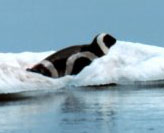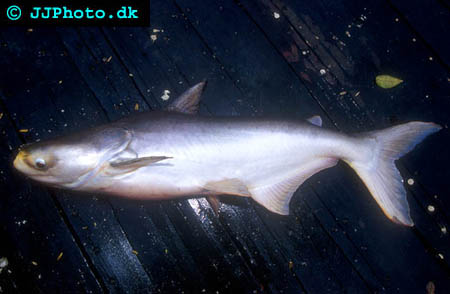Category Archives: Environmental
Is the ribbon seal threatened by global warming or not?

You can read more about this in the San Francisco Chronicle
http://www.sfgate.com/cgi-bin/article.cgi?f=/c/a/2008/03/27/BAC0VR2CK.DTL
The ribbon seal (Histriophoca fasciata) inhabits the Arctic parts of the Pacific Ocean and almost never come to land; it spends most of its life in the ocean and on sea ice. During winter and early spring, it lives on the pack ice of the Bering and Okhotsk Seas where it molts (sheds) and breed. When the summer comes, the ribbon seals head for the open water and stay there until next winter. Young ribbon seals are hunted for their fur, but efficient hunting is difficult since this species does not live in herds. For most hunters, the herd living Harp seal is a much more convenient target. In 1969, the Soviet Union limited the hunt on Ribbon seals and this has also had a significant positive impact on the populations.
Wildlife Conservation Society mapping the coral reefs with the most potential for conservation
picture provided by cocoa_pleco of the AC
The Wildlife Conservation Society and the Geo-information Science and Earth Observation (ITC) have developed a new way of determining which of the coral reefs are at highest risk against climate change effects, and which reefs have the greatest potential for conservation success. Each Year, for the past 30 years, 5.4% of the coral reefs are devastated by bleaching due to climate changes. The primary cause of coral bleaching is high water temperature (global warming).
For the coral reefs, a temperature increase of only 1.5°C that lasts for six to eight weeks will trigger coral bleaching; and if those high temperatures continue beyond the eight week mark, the coral begins to die off. While high water temperatures is not the only reason for coral bleaching; which can also be caused by disease, pollutants, or changes in salinity; high temperature bleaching is the greatest concern because it effects coral on a global scale as opposed to a small isolated section of coral suffering from a different bleaching cause.
The WCS and ITC model uses a collection of data from reefs, including: temperature, ultraviolet lights, winds, currents, and the concentration of microscopic plankton on the surface of the ocean to determine the most troubled reefs, and reefs with the most hope to survive with conservation.
To read the entire article and find what areas in the Indian Ocean are worst, and best, for the reefs visit: http://www.sciencedaily.com/releases/2008/04/080416165732.htm
To read more on reef bleaching and conservation efforts in the Great Barrier Reefs visit the website for the Great Barrier Reef Marine Park website at: http://www.gbrmpa.gov.au/corp_site
Dam feared to cause trouble for migrating giant Mekong catfish
Giant Mekong catfish. Copyright www.jjphoto.dk
According to Zeb Hogan, head of the National Geographic Society’s Megafishes Project, a new dam project planned for Khone Falls in Laos threatens the migration of the Mekong giant catfish. The largest Mekong giant catfish ever caught weighed in at an astonishing 293 kilograms (646 pounds), but the existence of this magnificent species is unfortunately threatened in the wild and it is currently listed as critically endangered by the World Conservation Union.
You can find out more by visiting National Geographic at http://news.nationalgeographic.com/news/2008/04/photogalleries/catfish-pictures/
The Mekong giant catfish inhabits the Mekong River Delta in South-East Asian and can be found not only in Laos, but also in nearby Cambodia. Earlier, the species lived in Thailand as well but it is now believed to have become completely eradicated from the Thai part of the Mekong River Delta. (It has however been introduced as a sport fish in a number of lakes in Thailand, so the species has not vanished completely from Thai waters.) The situation is critical for the populations in Laos and Cambodia as well and the new dam might worsen an already precarious situation. The primary threats against the Mekong giant catfish are habitat destruction, pollution and over fishing. You can find more information about the Mekong giant catfish here: http://www.aquaticcommunity.com/catfish/giantmekong.php

